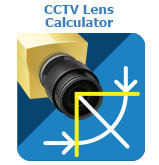Sometimes you may need to add a certain camera model into the program camera database. We will describe how to do it quickly and easily in this article.
1) First of all, you need to find camera specifications on the Internet. Usually, they are freely available on the manufacturer’s website. (Important: we recommend to use data only from official websites of camera brands).
We will use 2 Hikvision cameras for our example – with fixed and varifocal lenses.
Links to our examples:
https://us.hikvision.com/en/products/cameras/network-camera/performance-series/indoor-dome/8-mp-ir-fixed-dome-indoor-network
https://us.hikvision.com/en/products/cameras/network-camera/value-series/outdoor-bullet/varifocal/2-mp-outdoor-ir-varifocal
2) We will fulfill only the most required fields for the camera database. Let’s leave only those columns that need to be necessarily filled.
They are:
- manufacturer
- model
- sensor format
- resolution (X and Y)
- lens
- angles (can be only horizontal)
Now open the camera database. For our convenience, let’s leave only required columns. Do a right-mouse click on columns’ names, selects “Show/Hide columns” and tick the listed columns.

3) Now turn on “Edit mode” for the camera database and click “Add”.
4) Transfer the data form specifications and click OK.
The first camera has fixed lenses.
The model has several lenses, focal lengths can be specified via ; . In the corresponding to the lenses order, please enter vertical and horizontal angles using ; . The number of specified angles and lenses should be the same.
After adding the camera with several lenses, you can be select different focal lengths from the drop-down menu.
The second camera has a varifocal lens.
The range of focal lengths is specified via ~ . Vertical and horizontal angles are entered in the corresponding to the focal lengths order. It is important to remember that smaller focal length corresponds to larger angles (they may not be specified in this order in the specifications).











